Early last month, at the start of a most photogenic fall-foliage season in the Kyoto area, I posted “First Taste of Fall Colors at Shiga's Amazing Kongourinji Temple”, ending that post with this photo:
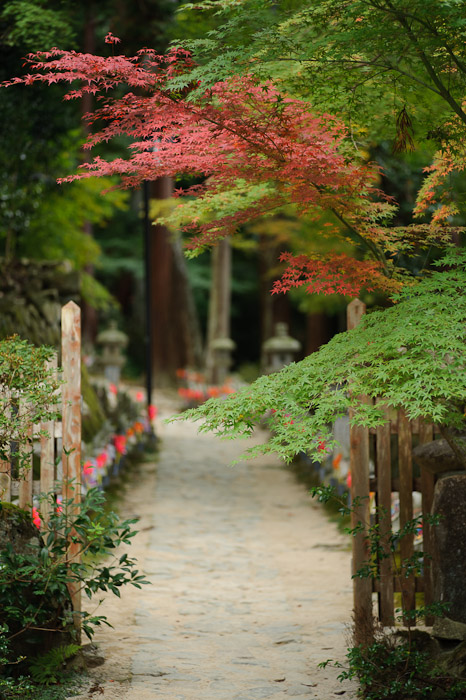
Nikon D700 + Voigtländer 125mm f/2.5 — 1/400 sec, f/2.5, ISO 500 — map & image data — nearby photos
Start of a Very Long Path
300 meters of sorrow and anguish await
I had intended a quick followup post to explain the “300 meters of sorrow and anguish await” caption of that photo, but I was precluded from doing so by a subsequent succession of visits to other amazing places (including the Konzou Temple, the Kotou-in Temple, the most impressive Yoshiminedera Temple, the Sanzen-in Temple, the Sokusouji Temple, the gardens at Shouzan, the Iwato Ochiba Shrine, among others). I felt a bit overwhelmed with the orgy of photogenic foliage goodness, but it's a wonderful problem to have.
Anyway, back to the location of today's post, the many visual and awe-inspiring delights of the Kongourinji Temple on the eastern side of Lake Biwa must continue to wait for later followup posts, because today's post is about pain and sorrow.
First I must explain that Buddhist temples and Shinto shrines are religious locations, but for most Japanese, they are cultural and perhaps vaguely spiritual, rather than religious, somewhat in the same way a woman might wear a cross necklace as a fashion statement rather than for its religious meaning. I am Catholic and so temples and shrines have no spiritual/religious meaning for me, but because they do to others I treat them with respect and conduct myself accordingly when present.
But my visit to the Kongourinji Temple turned out to be deeply moving... almost spiritual... because of what lies beyond the gate in the photo above.
Here's a photo from the same position with a different focus:
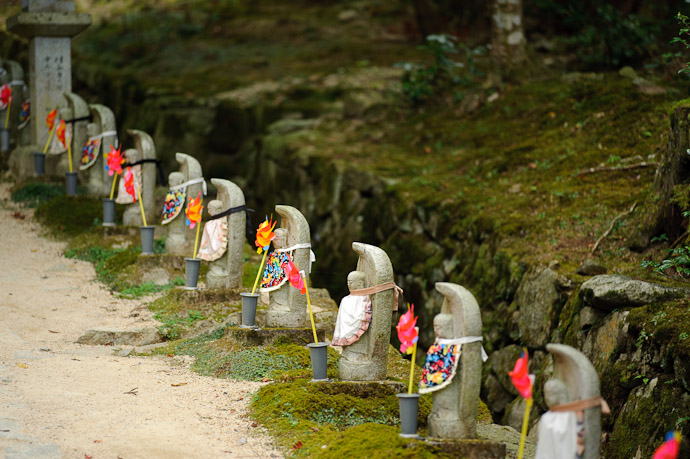
Nikon D700 + Voigtländer 125mm f/2.5 — 1/400 sec, f/2.5, ISO 720 — map & image data — nearby photos
Little Statues
with bibs and pinwheels
The little statues are Jizou (地蔵), a common sight in neighborhoods throughout Japan as a wish for the protection of children. At this temple, I was told, they were each placed here by parents who had lost a child, as a form of prayer that the child will find an easy path to heaven.
There were a lot of statues.
The pinwheels were in holders normally filled with flowers by the family, and while walking about I overheard several Japanese wonder aloud why there were pinwheels instead. It seemed obvious to me that children would prefer a pinwheel to flowers, and that the plastic pinwheels would last a lot longer, too. The few that I broached the idea to readily agreed.
They lined both sides of the path, according to a sign, for 300 meters. From where I was at this point, the path wound off into the distance as far as I could see...
Occasionally, people ventured in...
A TV crew from Tokyo came by...
I stood outside the path.... the main entrance to the temple complex was a different way.... but I couldn't help but feel overcome by strong emotions. My first thought was actually not that of losing my own child, but of family members I know who have. I started to feel a deep sorrow, even if only by proxy, to think of parents losing a child, and for the specific parents represented by each statue.
It was almost spiritual, and was the first time I'd felt anything remotely like that while visiting a shrine or temple, which to me are places of cultural, historical, and photographic delight. The more I stood there, the more dispirited I felt. Yet, I somehow felt glad for the emotion, that I had an experience that transcended “pretty picture!”. It's weird.
I've lit incense at a temple/shrine before, but only because I like the smell. But for some reason I felt compelled to light two sticks for the aforementioned family members....
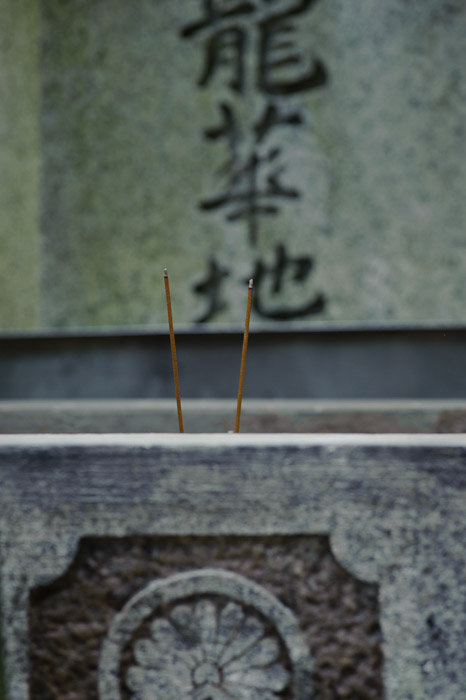
Nikon D700 + Voigtländer 125mm f/2.5 — 1/400 sec, f/4, ISO 640 — map & image data — nearby photos
Thinking of Your Sorrow
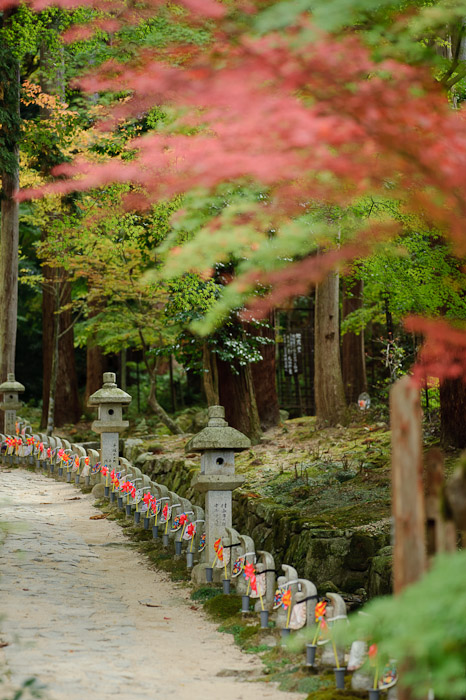
Nikon D700 + Voigtländer 125mm f/2.5 — 1/400 sec, f/2.5, ISO 1250 — map & image data — nearby photos
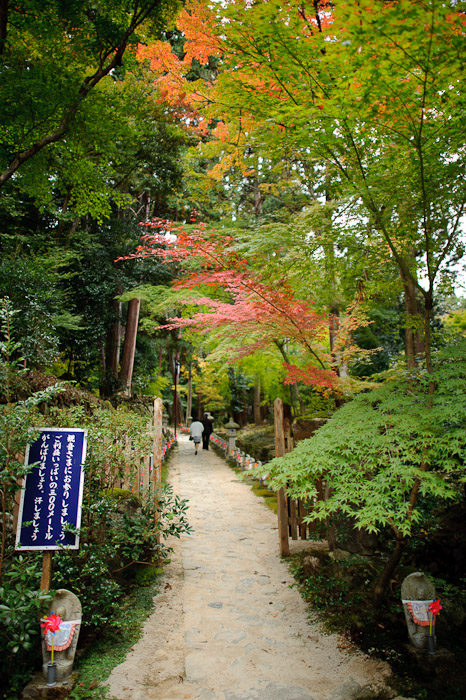
Nikon D700 + Nikkor 24mm f/1.4 @ 24 mm — 1/640 sec, f/1.4, ISO 200 — map & image data — nearby photos
The sign at the start of the path says something along the lines of “Let's go to the goddess of mercy. Let's persevere for the whole 300 meters for great benefit. Let's sweat.”
I found out later that each statue is numbered. The two flanking the entrance are the last two, numbers 999 and 1,000.
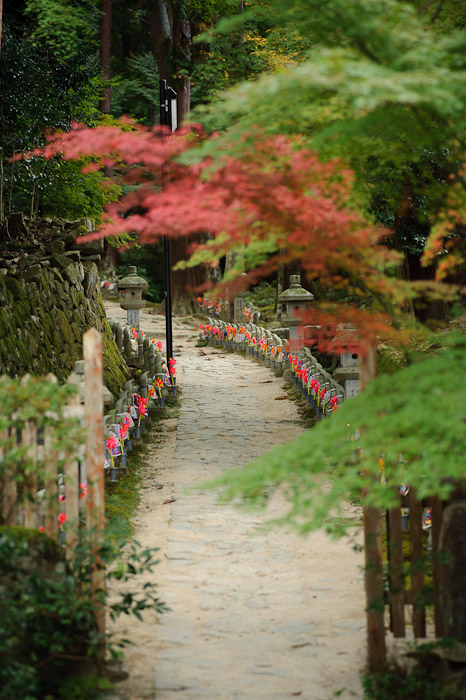
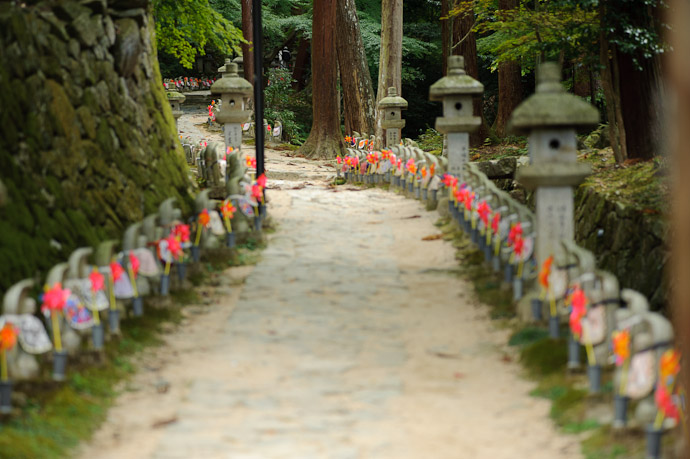
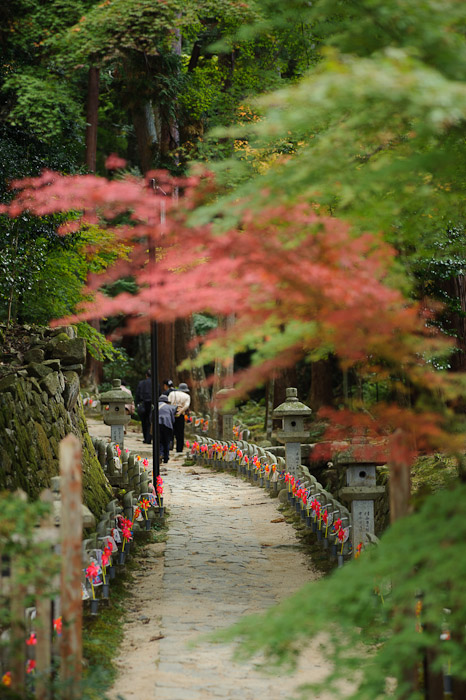
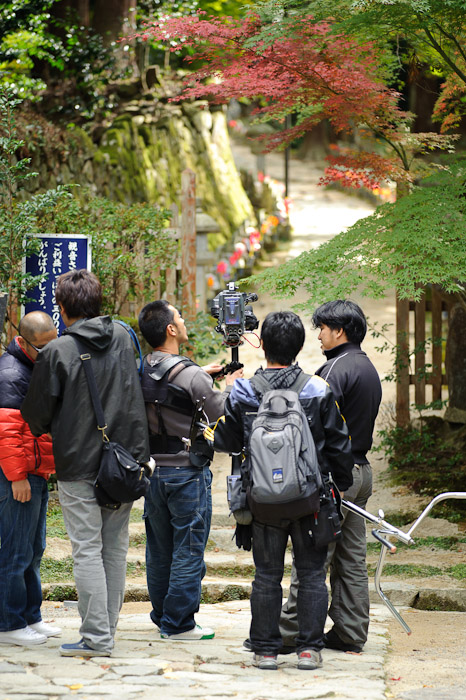
Thankyou for a very powerful and emotional post Jeffrey, I often visit your blog for the beauty of your adopted homeland that you reflect through your pictures…but the words and pictures of this post I found particularly moving.
Maybe I am getting old (well I know I am!) thankyou again.
Burlington Ontario Canada: 2010 12 20 Outside temeperature at 00:12 is minus three degrees Celsius, the sky is clear. There is some snow on the ground however so unlike London and Sarnia Ontario an hour’s drive west of here where there is well over four feet of hard-packed snow on the ground.
As to the walk of three hundred metres: you have mentioned before your Catholic faith; perhaps your faith sustains you in ways you perhaps have never imagined. And as such, such faith allows you as a photographer, a father and
a technically inspired employee to perhaps see things in a different light as it were.
Called it an ispired light, maybe?
Merry Christmas then to you and your extended family Jeffrey.
Keep doing the posting and photography, ’tis wonderful!
Hi, I found your website via your exif viewer. I just wanted to say thanks for the service and also that these photographs are quite wonderful! It makes me want to go to Japan even more! Keep up the good work! Peter